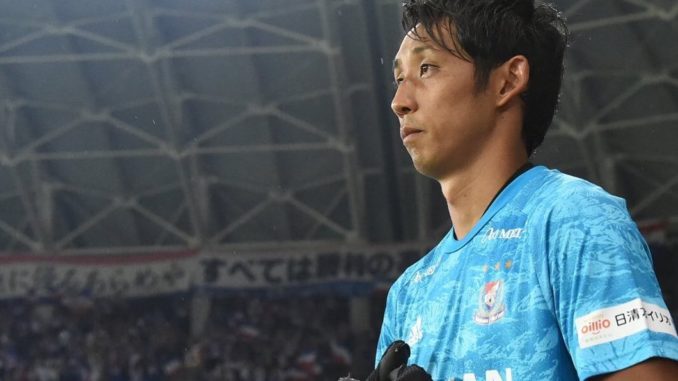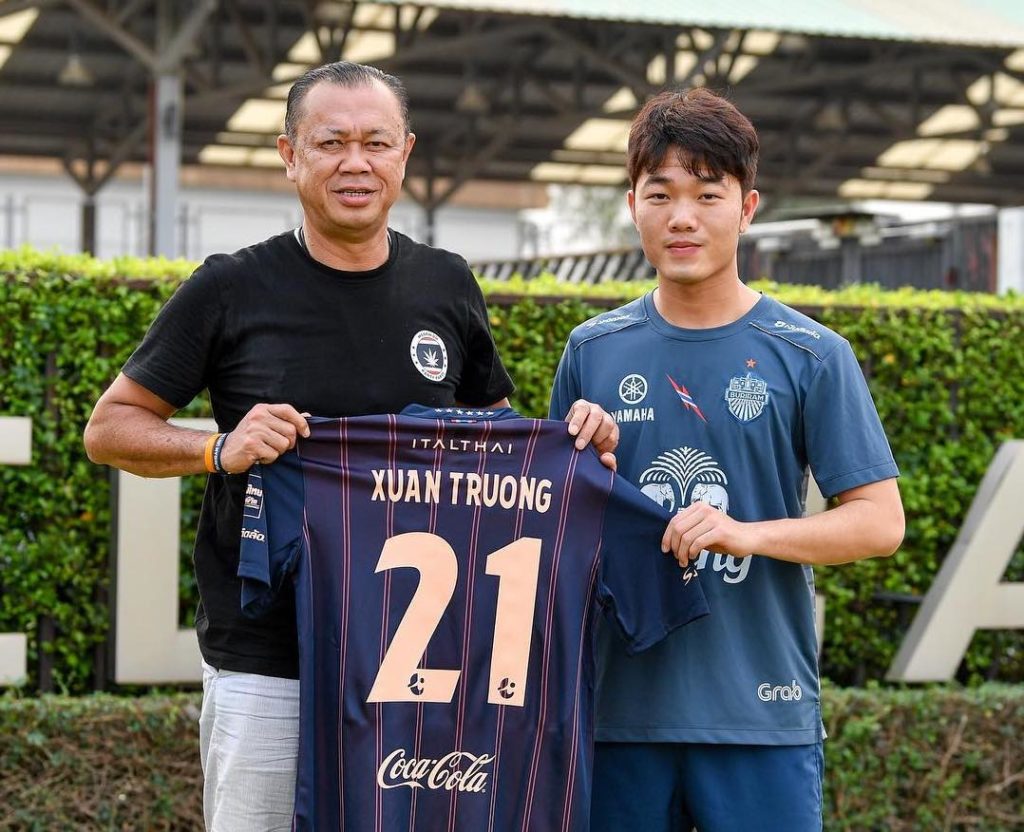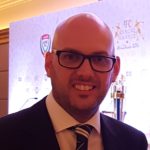
Park Il-gyu has had a pretty unremarkable career.
The Japanese-born South Korean shot-stopper has spent most of his career in the lower tiers of Japanese football, mostly in J3 with Fujieda MYFC and FC Ryukyu. As such, few headlines were made when the then 28-year-old was plucked from relative obscurity by Yokohama F.Marinos ahead of the 2019 season.
But seizing his opportunity when veteran Hiroki Ikura, who had been with Marinos since 2005, departed the club early in the 2019 season, Park quickly assumed the number one mantle and played a key role in Yokohama breaking their long title drought.
For just the second time since 2005, Yokohama F.Marinos will play in the continent’s showpiece tournament – the AFC Champions League. It’s a meteoric rise for the 30-year-old who just over 12 months ago was playing in front of just a few thousand fans in the third tier of Japanese football.
Now, having won the J.League title in front of over 60,000, Park is on the verge of playing against the likes of Oscar and Hulk at Shanghai SIPG, as well as the AFC Champions League’s all-time leading scorer, Lee Dong-gook of Jeonbuk Hyundai. It is the stuff of dreams.
Except that Park might not get on the pitch. Not because he’s injured, and not because he’s out of form or not good enough. But because of regulation.
The Asian Football Confederation introduced what is known as the “3+1 rule” for the 2009 edition of the AFC Champions League, allowing for four foreign players to be included in any match day squad so long as one of them was from an AFC member nation. Otherwise a limit of three foreigners would apply.
In simple terms, three “normal” foreigners (i.e. from Europe or South America) and one “Asian player”.
“I would love to see a Saudi player playing in Korea and a Korean playing in Saudi Arabia,” AFC president Mohamed Bin Hammam said at the time.
“By implementing this 3+1 rule, we are giving more chances for Asian players to play for other Asian clubs.”
And few could argue that the rule hasn’t been effective. It was almost immediately implemented by leagues across the continent and so we saw Bin Hammam’s dream become reality as players moved freely around the continent as clubs, especially those playing in the ACL, capitalised on the new regulation.

(Photo: IG/Buriram United)
But as more and more players traverse the continent, and some league’s relax their foreign player limits, we are beginning to see a (perhaps unintended) consequence of the rule. Clubs that have been proactive and signed more than one “Asian player” are now having to choose which one to include in their AFC Champions League squad.
Of course, the simple answer is that there is nothing stopping a club from registering a second or third “Asian player” as one of the three in the 3+1 scenario. And that is true. But we also have to live in reality and know that, more often than not, clubs are going to prioritise their other foreigners, often on big money, from South America or Europe.
In the case of Yokohama F.Marinos, with the J.League’s relaxed foreign player limits, they somehow have to squeeze Park, Theerathon Bunmathan (Thailand), Erik (Brazil), Thiago Martins (Brazil), Edigar Junio (Brazil), and Marcos Junior (Brazil) into their AFC Champions League squad.
Six into four doesn’t go, so two players are going to have to be squeezed out.
Theerathon appears a lock for the “+1” spot, which leaves three other spots available. Thiago is one of the league’s best defenders and picks himself.
That leaves two spots.
Erik and Marcos Junior struck up a title-winning combination at the tail end of the 2019 J.League season, while Edigar Junio and Marcos Junior were equally compelling at the start of the campaign before injury ended Edigar Junio’s season.
It’s hard to see Ange Postecoglou not opting for one of those combinations, which means, as well as one of the Brazilians, Park gets squeezed out. His chance to showcase himself on Asia’s biggest stage, his chance to cap a fairytale rise from J3 to the summit of Asian football, all dashed by a regulation that in effect limits the number of Asian players in the competition.
It seems hugely counterproductive.
Clubs in Thailand, and increasingly in other Southeast Asian nations as the tournament expands to 40 teams in 2021, have and will encounter the same problem.
Thai League regulations allow for clubs to sign three “normal” foreigners, as well as one “Asian player”. In addition, however, they are also permitted to sign a number of ASEAN players from other Southeast Asian nations.
Its intent was largely what Bin Hammam had in mind 12 years ago, to encourage greater movement within the region and to position the Thai League as the premier destination for talent in Southeast Asia.
But last year Buriram United found themselves in the position of having three “normal” foreigners, as well as Japanese international Hajime Hosogai, plus Vietnam’s Lương Xuân Trường and the Philippines’ Stephan Palla and Javier Patino.
While it’s easy to question the transfer dealings of the club, and how signing so many foreign players was ever going to be workable, especially with the abundance of young Thai talent on their books, but it meant they were put in the same position of having to choose which of their four Asian players would make their AFC Champions League squad.
As league’s develop more means of stimulating intra-Asian player movement – the J.League doesn’t count players from ‘partner member’ nations as foreigners, while the K League will this year introduce an ASEAN quota – the prospect of more Asian players being denied the chance to play in the AFC Champions League becomes increasingly more likely.
That is surely not the intent of the 3+1 rule.
The rule, as was announced by Bin Hammam, has achieved its objective. Movement of players is more regular and we now see an Uzbek player in the K League, a Thai player in Japan, a North Korean player in Qatar, and an Australian in Saudi Arabia.
But it’s surely time to review the ruling and ask the question – aside from acting as a catalyst for player movement, is it now also limiting player movement and the number of Asian players playing in Asia’s showpiece tournament? Would clubs be open to signing more players if ACL regulations allowed?
I say it’s time to throw open the floodgates, so to speak, and allow clubs to play an unlimited number of Asian players in the AFC Champions League.
The aim of the AFC Champions League, surely, is to showcase the very best of Asian football, and you do that by showcasing Asian talent.
On the one hand the 3+1 rule allows for that, because it means teams can’t fill their squads with foreign players from Europe or South America, as we see elsewhere in the world, particularly in Europe. The strength of any side in the ACL is dependent on its home-grown talent. Shanghai SIPG might have Oscar and Hulk, but it means nothing without a strong core of local players alongside them.
But when players like Park miss out on the chance, perhaps a once-in-a-lifetime chance at that, to play continental football through no fault of their own, then surely it’s surely time to review and tinker to ensure in the future players like Park get their chance to shine in the ACL spotlight.
Photo: IG/Yokohama F.Marinos
Listen to Scott and Paul discuss their options for improving the AFC Champions League from Episode 37 of The Asian Game podcast.




